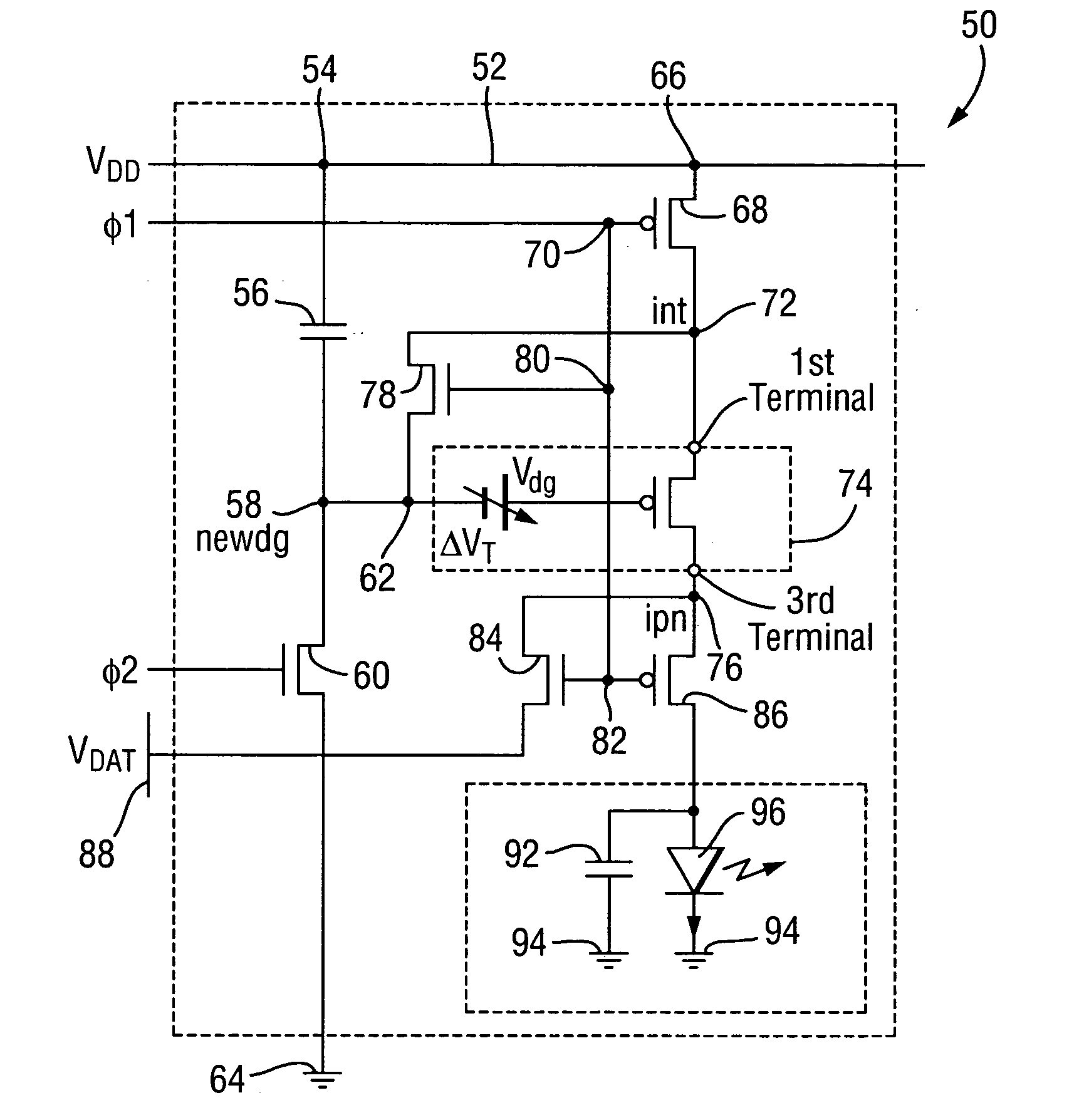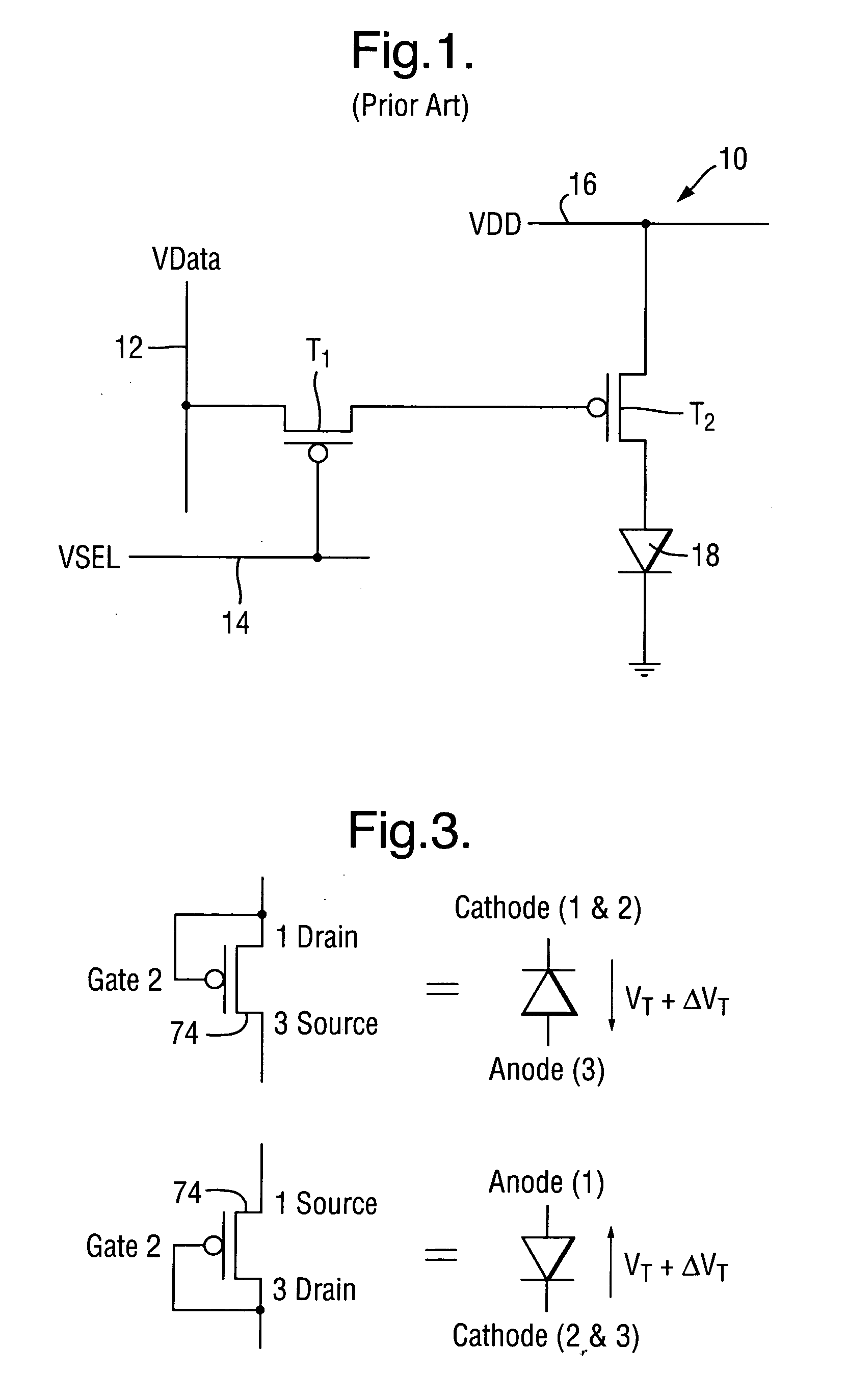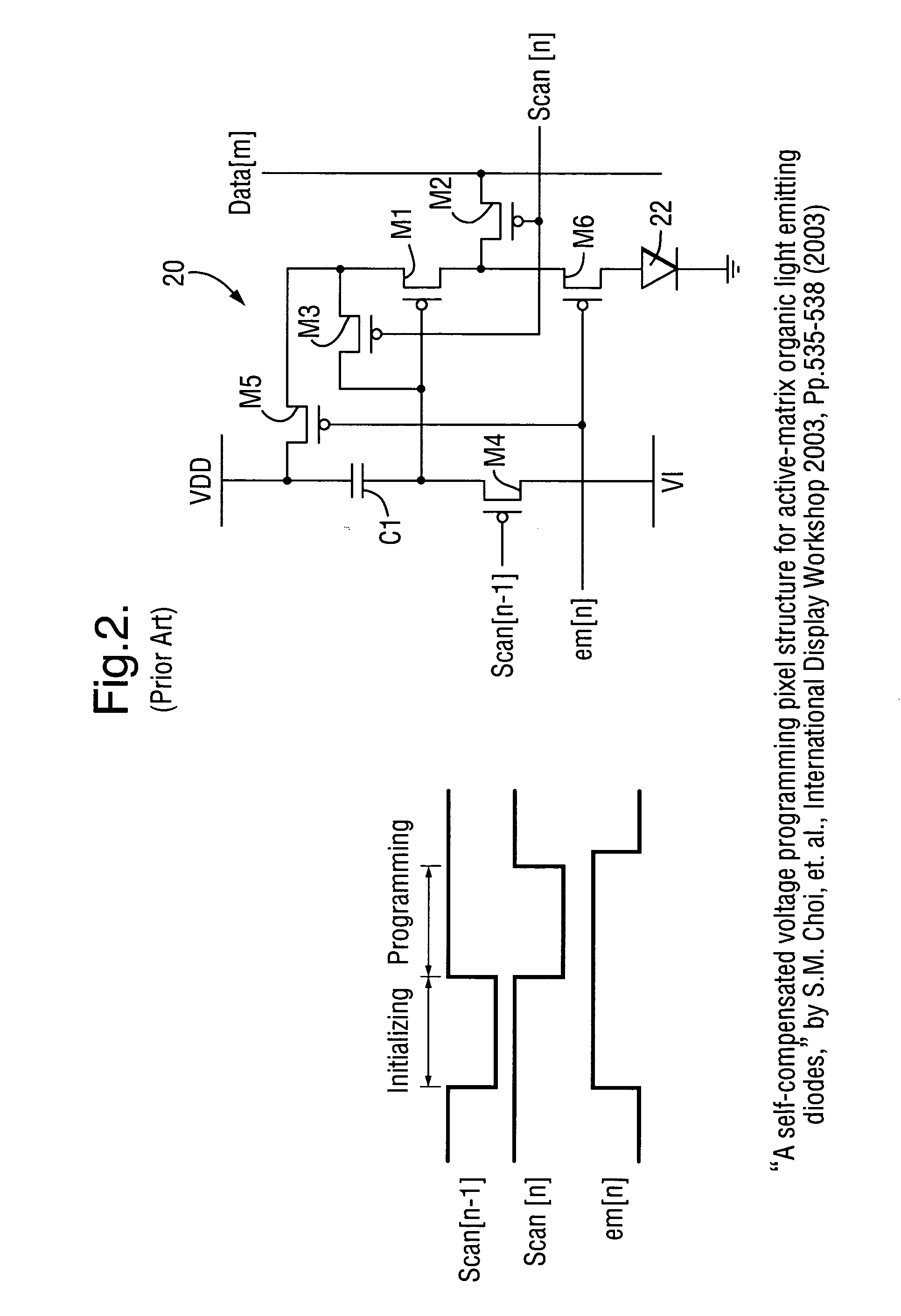Pixel circuit
a pixel circuit and circuit technology, applied in the field of pixel circuits, can solve the problems of non-uniformity, non-uniformity, etc., and achieve the effects of reducing the time taken for initialisation and programming of the pixel circuit according to the present invention, reducing the time taken for pixel circuit initialisation and programming, and being more compact and compa
- Summary
- Abstract
- Description
- Claims
- Application Information
AI Technical Summary
Benefits of technology
Problems solved by technology
Method used
Image
Examples
first embodiment
[0087] Referring to FIG. 4, a pixel circuit 50 according to the present invention comprises a first rail 52 having a first node 54 coupled to a first terminal of a first capacitor 56. A second terminal of the first capacitor 56 is coupled to a second node 58 (referred to as newdg) which is coupled to a source terminal of a first n-channel transistor 60 and a third node 62. The first n-channel transistor 60 comprises a gate terminal and also a drain terminal that is coupled to a second rail 64.
[0088] The first rail 52 comprises a fourth node 66 coupled to a source terminal of a first p-channel transistor 68 comprising a gate terminal coupled to a fifth node 70 and a drain terminal coupled to a sixth node 72 (referred to as int). The sixth node 72 int is coupled to a first terminal of the driver transistor 74 comprising a gate terminal and a third terminal. The driver transistor 74 is a second p-channel transistor. As best seen with reference to FIG. 3 and also described in detail lat...
second embodiment
[0107] Referring to FIG. 6, the pixel circuit 50 of FIG. 4 according to the present invention comprises an additional fourth p-channel transistor 98 comprising a source terminal coupled to the drain terminal of the third p-channel transistor 86 and a drain terminal coupled to the anode terminal of the OLED 96.
[0108] In operation, in the pre-charge stage, the second signal φ2 is applied to a gate terminal of the fourth p-channel transistor 98. The first n-channel transistor 60 is switched on and the fourth p-channel transistor 98 is switched off thereby isolating the OLED 96 during the pre-charge stage even if the first signal φ1 is logic 0 when the second signal φ2 is logic 1. The second embodiment therefore allows different driving waveforms to be used as described below with reference to FIGS. 11(a) and 11(b).
[0109] Referring to FIGS. 11(a) and (b), the second signal φ2 is logic 1 prior to the first signal φ1 becoming logic 1. If these driving waveforms were to be used in the cir...
third embodiment
[0110] Referring to FIG. 7, the pixel circuit 50 of FIG. 4 according to the present invention comprises an additional fifth p-channel transistor 102 and an additional fourth n-channel transistor 104. The fourth n-channel transistor 104 comprises a source terminal coupled to the first rail 52 and a drain terminal coupled to a node 108 referred to as newdg2. The node newdg2 is coupled to the third node 62—that is, node newdg2 and the third node 62 are technically the same—and to a first terminal of the fifth p-channel transistor 102. The fifth p-channel transistor 102 comprises a second terminal coupled to the second node 58 (newdg).
[0111] In operation, in the pre-charge stage, the second signal φ2 is applied to a gate terminal of the fourth n-channel transistor 104 and a gate terminal of the fifth p-channel transistor 102. When the second signal φ2 is logic 1 and the first n-channel transistor 60 is switched on, the fifth p-channel transistor 102 is switched off and the fourth n-chan...
PUM
 Login to View More
Login to View More Abstract
Description
Claims
Application Information
 Login to View More
Login to View More - R&D
- Intellectual Property
- Life Sciences
- Materials
- Tech Scout
- Unparalleled Data Quality
- Higher Quality Content
- 60% Fewer Hallucinations
Browse by: Latest US Patents, China's latest patents, Technical Efficacy Thesaurus, Application Domain, Technology Topic, Popular Technical Reports.
© 2025 PatSnap. All rights reserved.Legal|Privacy policy|Modern Slavery Act Transparency Statement|Sitemap|About US| Contact US: help@patsnap.com



